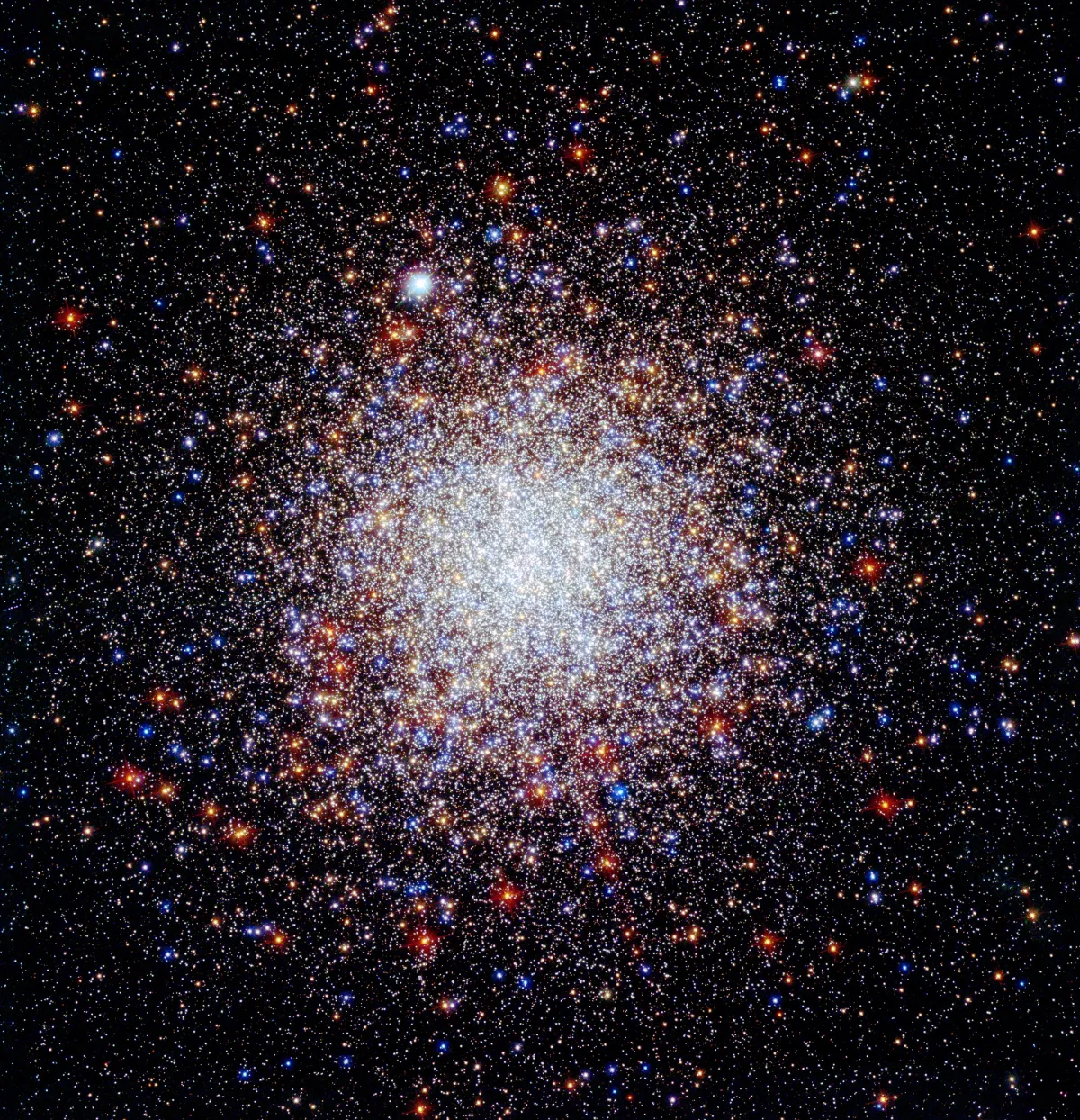Globular Cluster NGC 5286

History
Scottish astronomer James Dunlop discovered this globular cluster on 29 April 1826 while observing with his 9-inch f/12 speculum reflector from Parramatta, NSW. He listed it as Δ 388, observed it six times and finally wrote: «A bright exceedingly well-defined rather elliptical nebula, about 1' diameter, exceedingly condensed almost to the very edge, and gradually a little brighter to the centre. This is about 6' north of M Centauri – I have a strong suspicion that this is resolvable into stars.» [50]
On 31 March 1835 John Herschel this cluster was reviewed by John Herschel using his 18.3 inch reflector from South Africa. He listed it as h 3533 and observed it twice. His first entry from sweep 566 reads: «Very bright; gradually much brighter to the middle; 2.5' or 3' diameter; resolved into 15th mag stars; has one star 12th mag south following; the centre near the edge. It is in the field with Brisbane 4618 a star of 6th mag.» On sweep 693 from 15 April 1836 he reported: «Bright; round; very gradually brighter to the middle; resolved; diam. 2'; stars of 16th mag; a bright star 7th mag in field.» [11]
Physical Properties
It is believed that this globular cluster is part of the «Gaia Sausage» — the remnants of a dwarf galaxy that likely collided with the Milky Way between 8 and 10 billion years ago. During this merger, the dwarf galaxy was torn apart by gravitational forces, scattering several globular clusters and millions of stars into the Milky Way. These stars now follow unusual orbits, and when their velocities are charted, they create a distinct elongated pattern resembling a sausage — hence the name. Since globular clusters like NGC 5286 typically form in larger galaxies, researchers infer that the dwarf galaxy involved in the collision was one of the Milky Way's most massive early satellites. Located about 35'000 light-years from Earth, NGC 5286 is also considered one of the oldest globular clusters in our galaxy. [261]
| Designation | NGC 5286 |
| Type | GCL (V) |
| Right Ascension (J2000.0) | 13h 46m 26.5s |
| Declination (J2000.0) | -51° 22' 22" |
| Diameter | 11 arcmin |
| Visual magnitude | 7.4 mag |
| Metric Distance | 11.700 kpc |
| Dreyer Description | globular, vB, pL, R, rrr, st 15 |
| Identification, Remarks | h 3533; GC 3642; GCL 26; ESO 220-SC38 |
Finder Chart
The globular cluster NGC 5286 is located in the constellation Centaurus. Unfortunately it is not visible from Europe. On 19 April it in opposition with the Sun and is therefore highest in the sky at local midnight.
